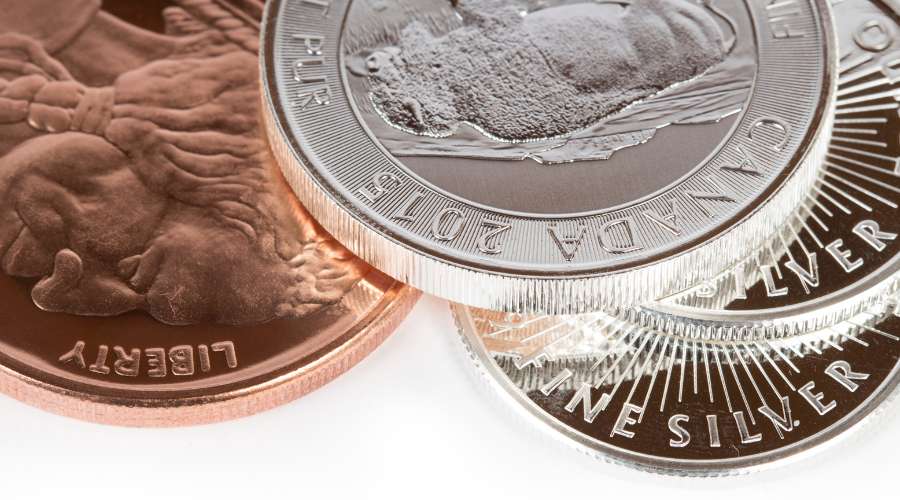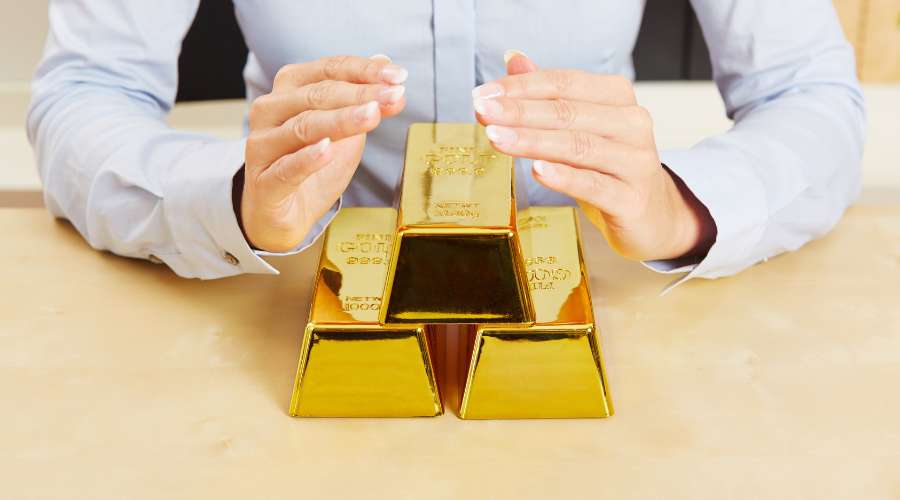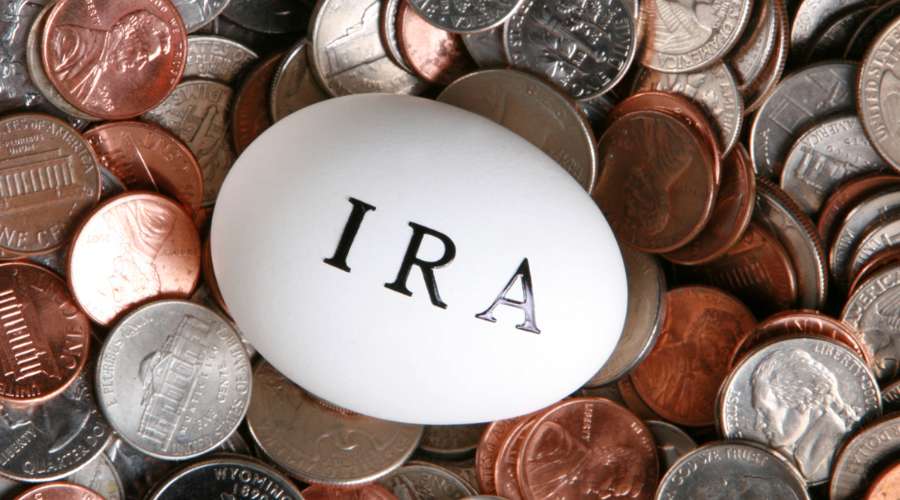The biggest financial mistake most elderly people make is thinking they need more retirement savings. As a result, many retirees must return to work, either full or part-time. One should start saving for retirement as early as feasible. There's more to it than just getting a head start on your retirement savings.
It's important to start putting money away as soon as possible, but keeping what you save safe is even more critical. To do so, it's important to consider various safe investment opportunities for retirement.
As retirement age approaches, investing a larger portion of retirement savings in safer options like precious metals is prudent. If your riskier investments fail, this will ensure that you still have enough money to retire comfortably.
This comprehensive guide will give you an overview of the different types of precious metals, their potential benefits, and the best strategies for successfully investing in them for your retirement.
With the right knowledge, investing in precious metals can give you the peace of mind that your savings are protected and ready for your golden years.
If you are interested in investing, make sure to take a look at our highest recommended companies for this year!
>> Click Here For A List Of The 5 Highest Recommended Precious Metals Investment Companies <<
What Are Precious Metals?

Precious metals are rare and valuable elements, including gold, silver, platinum and palladium. These metals have been used throughout history for jewelry, currency, and industry due to their strength, malleability, and unique properties.
Gold, in particular, has been prized as a valuable commodity for centuries due to its beauty and rarity. Silver is also highly sought after for its use in jewelry, coins, and electronic components. Platinum and palladium are also valuable for their superior strength and ability to resist tarnishing or corrosion.
In investing, precious metals are attractive because they are tangible assets that hold their value over time. Many investors diversify their portfolios by investing in gold, silver, platinum, and palladium, as these metals can act as a hedge against inflation and economic downturns.
Precious metals are also great investments to protect wealth, as they can remain relatively stable even during market volatility.
Precious metals are also widely used in the manufacturing industry. Gold is often used in electrical components and circuitry, while silver is used in solar panels and batteries. Platinum and palladium are used in catalytic converters and fuel cells due to their superior strength and corrosion resistance.
Benefits of Investing in Precious Metals for Retirement
Investing in precious metals for retirement can be incredibly rewarding and beneficial for your long-term financial security. Here are some of the advantages of investing in precious metals for retirement:
Hedging Against Inflation
Inflation is an economic term that refers to the gradual rise in prices for goods and services over time. It can be caused by several factors, such as increasing wages for workers, the rising cost of production materials, or an increase in government spending. As a result of inflation, the purchasing power of your money decreases, meaning that you will need more money to buy the same items in the future.
Investing in precious metals is a great way to protect yourself against inflation during retirement since the value of these metals tends to rise as inflation increases. Precious metals like gold, silver, and platinum have historically been suitable investments during times of financial uncertainty. Their prices remain relatively stable even when other investments may decline in value.
Diversification Benefits
By diversifying your investments, you spread the risk and increase the chances of seeing a healthy investment return. Investing in precious metals can help you diversify because the value of gold and silver does not move in lock-step with the stock market. This means that when the stock market is down, the value of gold and silver may still be up, giving you a more balanced portfolio.
Tax Benefits
Gold is considered a "collectible" asset, so it can be held in an IRA account. By having gold in an IRA account, you can avoid all capital gains tax on any profits made from the sale of the gold. Other investments, such as stocks, would be subject to capital gains tax if sold for a profit.
Ling-Term Stability
Investing in precious metals for retirement can bring you long-term stability, which is a great way to ensure you have saved enough money for retirement. Stability means that the value of your investments will remain relatively consistent over time.
This is important when investing for retirement because you want to ensure that your money will still be worthwhile when needed.
Liquidity
One of the main advantages of investing in this asset class is its liquidity. Liquidity is essential in retirement planning because it refers to how quickly you can access your money without sacrificing value.
In other words, with higher liquidity, you can convert your assets into cash quickly and easily, allowing you to use your savings when needed.
Precious metals like gold and silver are some of the most liquid assets, meaning you can easily buy or sell them in the market, even during economic uncertainty. This makes them an excellent choice for retirement as you can easily convert them back into cash whenever you need it.
Protector Against Market Crash
Investing in precious metals like gold and silver helps protect your retirement savings from market crashes. A market crash is when the values of stocks, bonds, commodities, and other investments suddenly drop significantly quickly.
This can be caused by various factors, including economic downturns, political turmoil, or even natural disasters. Investors panic and sell their investments when this happens, leading to further drops in value.
Investing in precious metals for retirement can help protect your savings from these sudden market drops. Precious metals tend to be less volatile than other investments, meaning that their values don't swing up and down as much.
They also tend to hold their value better over long periods. So, even if stock prices drop suddenly, your precious metals investments remain relatively stable.
Ways to Invest in Precious Metals for Retirement

We have discussed why investing in precious metals for retirement can be a wise decision. Now let's discuss how you can go about doing this. There are several ways to invest in precious metals, each with its unique benefits, so let's dive into the details.
Purchasing Metals Outside of a 401(k)
This is the simplest option, as it allows you to buy anything you want, store it safely, and then sell it when you retire if you need the money. Nevertheless, there are no potential tax advantages associated with pursuing this technique.
Purchasing Physical Metals in a Gold IRA
Another way to invest in precious metals is through a gold IRA. A gold IRA allows you to purchase physical gold, silver, platinum, and palladium with your retirement savings.
A gold IRA is a self-directed IRA, which means you're in control of all decisions regarding the investments in your account. With a Gold IRA, you can purchase coins, bars, rounds from the government and even collectible coins from private mints.
The gold must be held in an IRS-approved depository to remain tax-deferred until withdrawal. We've discussed more about gold IRAs in the next section of this writing.
Investing in Precious Metals Exchange-Traded Funds
One of the most popular ways to invest in precious metals is through Exchange Traded Funds (ETFs). ETFs are funds that track the price of a specific asset, such as gold, silver, or platinum, and generally trade on major exchanges like the NYSE, NASDAQ, and TSX.
ETFs offer several advantages for retirement investments:
When investing in precious metals for retirement, it's important to research and select an ETF that fits your particular goals and risk profile. Some ETFs may focus on only one metal, while others may invest in multiple metals and other commodities. It would help if you also looked into the ETF's performance history, fees, and liquidity before making a decision.
Investing in Precious Metal Mining Stocks
When you buy stocks in a precious metal mining company, you invest in the company itself. As the company grows and succeeds, so do the profits and the value of your investment. The company may also pay dividends which can provide you with additional income.
Investing in precious metal mining stocks also gives you exposure to the price of the underlying metal itself. If the price of gold, silver or any other precious metal rises, you'll also benefit. Conversely, if the price falls, you could suffer losses.
It's important to research the companies before investing to ensure they're stable and have proven track records of success. You'll also want to familiarize yourself with the industry and the various factors influencing the price of precious metals.
Investing in Futures
Futures contracts are agreements between two parties to buy or sell an asset at a predetermined price at a specified time and place in the future.
With futures, you can purchase gold, silver, platinum, and palladium. The contracts typically come in standard sizes; each covers a specific amount of metal. You can also buy fractional contracts if you don't have enough capital to purchase a full-sized contract.
Futures trading is a great way to invest in precious metals because of the potential for price appreciation. Since the contract is based on the current spot price at the time of purchase, you can benefit from any upward movement in the prices.
One of the advantages of investing in futures is that you can minimize the costs associated with buying and storing physical gold, silver, platinum, and palladium. With futures, you don't have to worry about securing the metal or dealing with any logistics associated with physical delivery.
Gold IRA: The Best Gold Investment for Your Retirement

A gold IRA is a self-directed Individual Retirement Account (IRA) that allows you to invest in physical gold, silver and other precious metals. It works just like any other IRA, but instead of investing in stocks or mutual funds, you can buy and hold physical gold, silver, platinum and palladium instead of investing in stocks or mutual funds.
A gold IRA is a perfect choice if you're looking for an investment with steady returns and low volatility. Gold has been a reliable store of value and an inflation hedge for centuries, and it can be a great way to diversify your retirement portfolio. With a gold IRA, you can invest in physical gold coins, bars, and other precious metals such as silver and platinum.
A gold IRA gives you more control over your retirement assets than traditional IRAs because it's a self-directed account. This means you decide where to invest your money and don't have to rely on a financial advisor or broker to make decisions for you.
You can choose to buy and hold physical gold and other precious metals or even invest in exchange-traded funds (ETFs) that track the price of gold.
There are three different types of gold IRAs:
Getting Started with a Gold IRA
If you're considering investing in a gold IRA, it's important to understand the steps involved in getting started. Here are the key steps to take when getting started with a gold IRA:
Step 1: Choose a Gold IRA Custodian
The first step to setting up a Gold IRA is to choose an IRA custodian. This company will hold your gold IRA account and is responsible for providing the IRS with the necessary paperwork. Make sure to select a reputable custodian with a good track record.
Step 2: Select a Gold IRA Provider
Once you've chosen a custodian, you'll need to select a gold IRA provider. This is the company that will handle the purchase and sale of your gold. You can choose from various providers, but select one with a good reputation and a wide selection of precious metals.
Step 3: Set Up the Account
Once you've selected a custodian and provider, you'll need to set up the gold IRA account. This requires filling out paperwork with your custodian and providing them with your Social Security number.
Step 4: Fund the Account
The next step is to fund your gold IRA account. This can be done by making a cash payment or transferring funds from another retirement account. You'll need to provide your custodian with the necessary documentation to prove that the funds come from a legitimate source.
Step 5: Select Your Precious Metals
Once your Gold IRA account has been funded, you'll need to select the precious metals you want to invest in. This can include gold, silver, platinum, and other precious metals. Make sure to research each metal's current market value and decide how much you want to invest.
Step 6: Make the Purchase
After you've selected your precious metals, you'll need to make the purchase. Your provider will arrange for the metals to be delivered to your custodian, who will then store them in an appropriate storage facility.
Step 7: Monitor Your Investments
Now that you have set up and funded your account, it's time to monitor your investments. This is vital to ensuring that your portfolio is optimized for maximum growth. While it's essential to keep an eye on your investments, don't become too obsessed with tracking market movements. It's best to take a long-term approach to investing to benefit from the compounding effect of returns.
Stay informed about the markets when monitoring your investments and regularly review your portfolio. It would help if you also tracked any regulatory changes that could affect your gold investments. You can do this by subscribing to newsletters or other industry sources.
It's also a good idea to speak with your financial advisor regularly. They will be able to help you adjust your portfolio to match your goals and needs.
Bottom Line
Retirement is a significant life event and ensuring your money is invested in the right places is important. Precious metals, such as gold, silver, and platinum, can be great options for retirement investments. They are reliable long-term investments and can be used as hedges against inflation.
A gold IRA is a great way to diversify your retirement portfolio. Gold has been used as an investment for centuries, and its value has held relatively steady over time. Investing in gold through a gold IRA also allows you to take advantage of its tax benefits since all profits from gold investments are considered long-term capital gains.
Our highly recommended gold IRA companies can help you manage your gold investments, so you don't have to worry about the intricacies of the process. They offer expert advice and guidance on how to best benefit from gold investments and can provide you with an easy, stress-free experience.
In conclusion, investing in gold through a Gold IRA is a great way to diversify your retirement portfolio. Gold's tax advantages and enduring value make it an ideal investment choice. We highly recommend using our highly recommended gold IRA companies to ensure that you get the most out of your gold investments.
Don't forget to check out our top recommended companies before investing!
